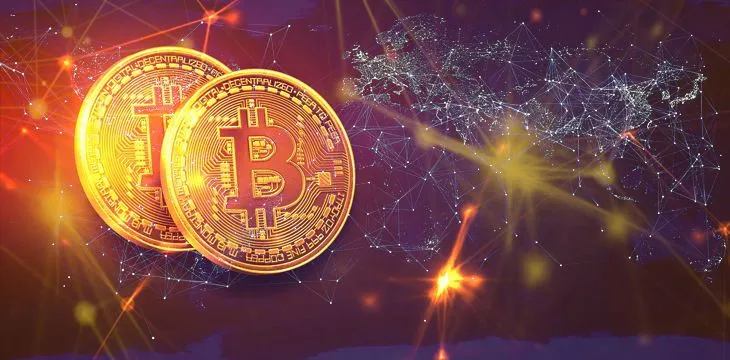|
Getting your Trinity Audio player ready...
|
Digital asset exchange Bitfinex has launched a peer-to-peer data streaming protocol and marketplace called “Dazaar”. While at a glance it looks similar to other P2P/distributed file sharing networks, Dazaar adds a payments layer that allows users to monetize their data. Does it have any benefits over using Bitcoin and on-chain storage? Let’s take a look.
In its launch announcement, Bitfinex showcased one use-case for Dazaar: a live video streaming application called Dazaar Vision. This would serve the same markets as any existing online video platform, with live streaming and paid subscription options. However Dazaar itself could conceivably be used for anything involving data transfer—or in other words, a distributed internet with built in payments.
We are officially live 🎉
Discover the power to hold control of your data and the possibility to monetise your content in an open environment with Dazaar 🎥https://t.co/0ohJg6TJu6 pic.twitter.com/2c1ptkNGVn
— dazaarcom (@dazaar_com) June 25, 2020
Sound familiar? Yes and no. It’s not the first project aiming to build a better internet around a new distributed data storage protocol. The internet itself is a form of this, though access is to files stored locally on servers with a specific address. BitTorrent offered a P2P file-sharing protocol that remains popular. More recently we’ve seen other attempts like MaidSafe and Storj with varying degrees of blockchain technology involvement.
Bitcoin has the Metanet, another grand-scale vision project with the goal of building a better internet. The Metanet exists almost entirely on the Bitcoin BSV (BSV) network, storing its data directly on the blockchain (if required) and using BSV for all payments and transactions.
What is Dazaar and how does it work?
Dazaar is a P2P data sharing network consisting of three components: verifiable, random-access storage, encrypted communications, and a payments layer. The first two are built on the MIT licensed Hypercore Protocol, and the third with a custom Dazaar extension.
Bitfinex said the Dazaar extension is blockchain-agnostic and can handle payments in any digital asset. That could even include digital fiat currencies using credit cards, though onboarding those would involve clearing extra regulatory hurdles.
Bitfinex gave a brief description of how Dazaar might work. A data owner (or content creator) would install Dazaar and choose a payment method (eg: 10,000 Satoshis/minute). Dazaar would then generate a cryptographic identifier it calls the “Dazaar Card” the data owner/seller could post anywhere. Buyers/consumers would then use the Dazaar Card to connect directly to the seller, pay the fee, and receive the data stream once the payment has been verified.
The Hypercore project website describes the protocol as a base to build all manner of data streaming and storage applications:
Hypercore comes with a secure transport protocol, making it easy to build fast and scalable peer-to-peer applications. Think lightweight blockchain crossed with BitTorrent.
But is it the best answer?
One person unimpressed with Dazaar is Bitcoin creator Dr. Craig Wright, who compared it to existing file-sharing services that enable criminal activity. He said: “They are not seeking long-term strategies where they build something of value that works within their law and intellectual property constraints.”
They are seeking two things. They seek instant wealth and they are seeking a means of creating something like Pirate Bay where they can flout the law. This is all about child porn, illegal file copy and criminality.
Given past experiences, it’s easy to see how Dazaar could be used in this manner. Governments have taken a dim view of such networks that are difficult to police and control. This is one of the reasons BitTorrent—which is designed for any kind of data transfer—is still seen mainly as a means to illegally download movies and music, rather than the way everyone sends and receives files.
Dazaar’s focus on payments for data streams is interesting, as is the asset-agnostic approach. While payment options are limitless technologically, users would face the same limitations as any platform today that handles digital asset payments—namely, speed and capacity, fees, and acceptance. BTC may be widely accepted but on-chain transactions are limited to 3-7 per second with high fees, making micropayments impossible. Others may build instant-swap mechanisms so users could pay in any asset, but those would likely come with their own fees and limitations too.
BSV’s Metanet, largely self-contained and with a native asset and payment system built-in, is a more forward-thinking solution. BSV also has enough capacity to store and transfer as much data as the internet today, and that data itself can be processed and stored on-chain, making it more useful to organizations needing to verify and audit their data directly. The Metanet can also handle computational tasks like smart contracts.
And of course, all payments are in BSV or BSV-based tokenized assets. It’s designed especially for micropayments and automation, sidestepping any limitations on those that other blockchains may have. The Metanet is designed to be an entirely new kind of network, and (with its on-chain focus) one that is legally compliant as well as secure and fast.

 07-09-2025
07-09-2025 





